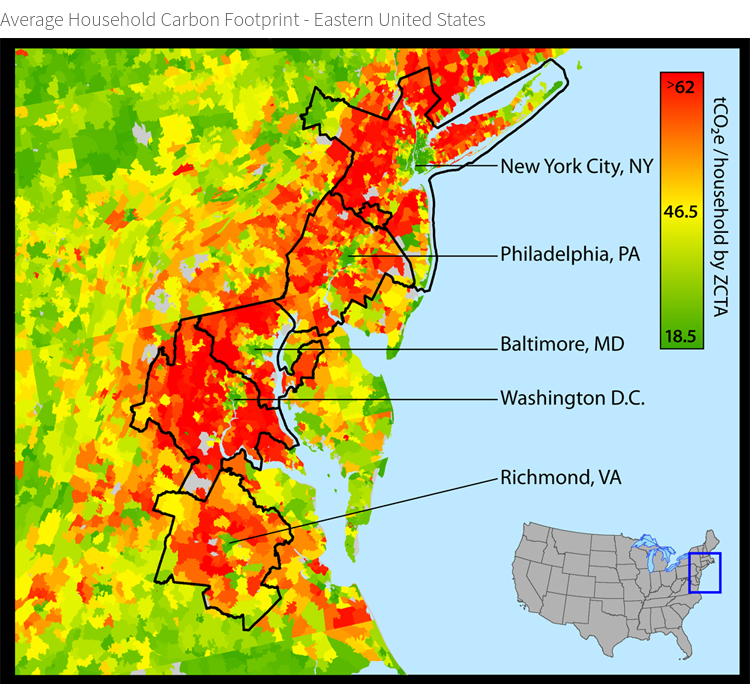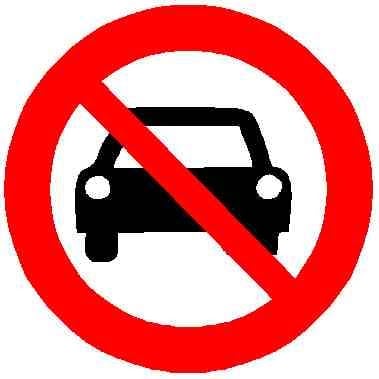Diversity is good. Different types of homes and zoning. Mix of nature and buildings
abolish zoning
Yeah sure, that could also be nice. I guess I meant that even in that case, without pre-zoning, the end result should be diverse
The issue is that all of those apartments are owned by one person getting filthy fucking rich from rent.
This is a pretty terrible way to make this point. The pic on the left is neater and the one on the right leaves almost no space for the people living there to do anything. You probably want a little bit of cleared land for literally anything to do on the island.
Then again, there isn’t a dock. So I figure the island on the right has a better way of building boats to leave.
I couldn’t live in a place that didn’t have a workshop, that’s what deters me from apartment blocks.
fuck … houses?
Low-density sprawl essentially requires cars. Further, cars need a ton of space for roads and parking lots. Denser, more walkable communities don’t need nearly as many cars and don’t need nearly as much roads and parking lots.
That’s not true you can have bikes, horses, skateboards, etc.
horses
who doesn’t ride their horse to the local grocery store?
When I lived in Lancaster, PA there was a little barn at the Costco for the Amish people to park their buggies
Low-density sprawl essentially requires cars.
I disagree. I live in the suburbs in Europe and there is plenty of single family homes with a garden here. But you’re still always within 500m of a bus stop or tramline. Have been living here without a car for quite while, it’s fine.
I’d be curious what the population density numbers are. There’s a world of difference in density between, say, single-family rowhouses and classic American suburbia.
My math is here: https://lemmy.world/comment/3165486
But essentially, for the same cost as cars, the lowest density possible before becoming rural 106 households / sq mi (6 acres per household) can have a bus pass every 6 minutes, 24/7/365. You can double frequency by adding a second stop on the way to a transit spine.
The idea that an American city might have a housing area A) without roads and B) with a bus stop and C) one that shows up every 6 minutes instead of once an hour makes me want to cry
You’d still want roads. Deliveries, emergency services, maintenance. But the roads can be just wider than a car.
Here’s a north american proof of concept of a car free neighborhood: https://m.youtube.com/watch?v=VWDFgzAjr1k
Yeah, I think it’s mostly rowhouses.
Also the entire suburb spreads along through a valley, so it’s like long and thin, which makes it very easy to run a central tramline through it.
But it still should be possible anywhere with good public transport.
Rowhouses: “let’s turn your house into an apartment!”
Why anyone would want to have their house attached to someone else’s is beyond me.
I live in a house attached to someone else’s and it’s pretty great
We have big open spaces in front and behind us instead of each house having their own big lawn. We have separate, fenced backyards but behind that is just a big open field with some benches and tables and trees scattered about.
But unlike in an apartment, you have the whole height of the building, so nobody above or below you. And the walls seperating the houses are really thick, so noise is much better than in an appartment block.
I guess you give up mostly garden space. I don’t think people specifically “want” that, but it’s still usually cheaper and much better situated than a proper free-standing house.
But unlike in an apartment, you have the whole height of the building, so nobody above or below you. And the walls seperating the houses are really thick, so noise is much better than in an appartment block.
That entirely depends on the construction. When I lived in a row home the duct work for the master bedrooms on either side shared a space with no sound insulation, so each side could hear just about everything in the other.
And most people don’t use front or side yards for much anyways, just decoration. I’d much rather have backyard than those, especially if it means I get the amenities that come with density, such as transit and walkability.
Plus, rowhouses just look so aesthetically pleasing. I don’t understand how anyone hates rowhouses.
Ah, there’s your answer. I love rowhouses and think they and other “missing middle” are a great compromise for getting denser, more walkable, more transit-oriented communities while still avoiding being like Manhattan. True low-density sprawl (as seen in so much of the US and Canada) is detached single-family homes with large setback requirements, large parking minimums, and typically large lot size minimums. It’s purposefully designed to essentially enforce car-dependent sprawl.
The style of development you describe is what we call streetcar suburbs, as they were generally developed along streetcar lines in the days of yore.
The style of development you describe is what we call streetcar suburbs, as they were generally developed along streetcar lines in the days of yore.
Yeah, you need to build these, they are great. During the busy hours, mine is like a 150m walk away and there is tram or streetcar every 3.5 minutes. It’s amazing.
Yes, let’s pack people in a dense area where diseases and tempers can and will run rampant because THAT has never happened before.
Sorry, I refuse to live on top of other people. Housing is not the enemy of nature - housing that is not in tune with nature is. It is completely possible to build homes that blend in with nature without having to resort to ultra-dense, 5-story brick behemoths filled with people who loathe one another.
I see what you are trying to convey, and I agree with you to an extent, but density is not the answer to sustainable housing.
Housing is fine, several of my personal heros lived in rural commues far away from society, where they are mostly self-sustained. They dont live in apartments, but there is no doubt I have great respect for them and believe they live in a very responsible fashion.
The problem came when people want to live in the middle of nowhere, produces nothing for their own, pays low taxes; yet think society owes them giant road infrastructure and wasteful parking lots. So that they can terrorize the lives of pedestrians and cyclists, also our dying planet, just because only their oversized driveway princess and their ecological hellhole of a lawn can give them a little sense of achievement in their otherwise fruitless life.
Density reduces emissions. Low-density, car-dependent suburban sprawl is extremely unsustainable for the planet.

Density reduces emissions
I reply to your infographic with a scientific paper that shows higher densities lead to higher CO2 emissions: https://www.mdpi.com/2073-4433/12/9/1193#:~:text=Regarding CO2 emissions%2C the,density%2C the higher the emissions.
This study was done in Spain.
Another study, in Nature, also shows that lower density is better for reducing carbon emissions and climate change. https://www.nature.com/articles/s42949-021-00034-w
Sorry, but you and your infographic/sources are not supported by science.
Literally the frist sentence in the abstract:
More than 50% of the world’s population lives in cities. Its buildings consume more than a third of the energy and generate 40% of the emissions.
“higher densities lead to higher CO2 emissions” you say…
Feel free to zoom in on essentially every city in America. You can even download the raw data yourself.
Further, your Nature study you link, actually read the paper and you find this nugget:
These limiting assumptions were necessary based upon the urban scale scope of this study. Providing additional levels of detail at the building scale would greatly improve the accuracy of the analysis and can be refined in future works. Employing a cradle-to-cradle approach to consider resource reuse, the impact of retrofitting existing building stock over rebuilding; the inclusion of transportation impacts; adding a dynamic time component to investigate material inflows and outflows; and including a detailed time-related analysis of carbon sequestration potential offered by urban greeneries in the simulated environments—are all valuable and important avenues for future work to build on this study and expand its relevance while reducing its limitations. This study therefore acts as a stepping-stone to provide a strong foundation from which extensive future work can be born.
It literally doesn’t even model transportation emissions. Considering this whole conversation is about sprawl causing more cars, this is kinda a glaring omission.
The low density/low height example in the nature article is still 5k people per Km^2. While definitions vary wildly, I usually see 1000-400 people per km^2 for suburb definitions.
Does example D look like suburbs to you? As something undefined it could be considered suburbs, but probably “streetcar suburb” in the Canadian/American context.
Critically the article also mentions a requirement for best practice greenery management to maximize carbon sequestration. I’m no botanist, but I’m guessing caretaken parks do better then monoculture lawns (assumption).
Edit: missed that the first link was a different study. That like on spanish cities has its lowest density group defined as <100 pop/hectare, if my math is right, that means <10,000 pop/km^2. Significantly denser than any suburb. This is also a region when thermal energy is spent of cooling, not heating. And while it adjusts for climate effect, it doesn’t seem to adjust for the modernity/thermal effectiveness of the buildings. Such to say, a building with an air-conditioner will spend more thermal energy than one without.
Basically your two links are showing that cities can be too dense, and there is a point when they lose GHg efficiency. There is no mention of anything lower than what, as a Canadian, I would still call high density (just not super high density).
It’d probably depend on the park and how it’s designed/managed, but I’d be shocked if monocultured lawns sequestered any carbon. I know in agriculture it’s a huge problem that industrially-grown monocultures – where they till the soil and crop-dust fertilizers and pesticides and herbicides and fungicides – emit huge amounts of previously-sequestered soil carbon. A result is that doing the reverse – i.e., growing food regeneratively in polycultures and without tillage and artificial fertilizers and without all the -icides – is considered a good way to sequester carbon.
Considering we grow grass lawns similarly to how we grow corn monocultures, I’d bet grass lawns are similarly awful for the soil and thus the climate as well.
I’m obviously biased by the parks I live near and see/use every day, but when I think of a park, I think of tree’d sitting areas, tree’d play areas, tree’d walking paths, and some monoculture sports fields, with trees for the stands.
There are lost of community gardens around, but as a black thumb I don’t use them and bias them out.
Basically my city has a hard on for trees in parks, and I’m all for it. I also think I’ve developed a bias that roads have no trees, and streets have trees.
The fact that your immediate first association with dense housing is disease is rather telling
Single family housing is a massive contributer to (sub)urban sprawl and car dependency. Increased residential density can reduce the need for cars by reducing the distance between people’s homes and their workplace, shops, etc.
Zoning laws are a bigger contributor
Apparently no one in the comments has seen people live outside of an American suburb.
If you look at land use maps, you will see that the urban areas are so small compared to the agricultural and livestock area needed to support the population. This is the biggest cause of deforestation, and population density actually makes it much worse, because it centralizes consumption and requires more logistic costs to deliver the needed food, with much higher rates of wastes. If we lived in less dense areas, perhaps we could do with local, smaller-scale agriculture instead.
In this image I can’t help but notice how much infrastructure cost there is here. Consider need for water treatment pipes run to and from each house for water and sewage as well as sewage treatment infrastructure. Keep in mind that failure rate increases with each house and by length of these runs that you are adding and fire hydrants being added every so many feet, shut off valves. Don’t forget that we now have significantly bigger demand for water as we now have a lot more vegetation to manage and a higher reliance on emergency services as we are spread out over a larger area so we now have to increase ems, fire, and police spending. Then you add the costs for electrical infrastructure with your sub stations and transformers and all the costs set to maintain that especially since these are underground lines apparently and ofcourse we have increased risk of failure again per service and foot run and higher demand on those services which will require more workers which turns into money being spent outside of the community. You then add the cost of data lines and phone lines including the costs associated with maintaining and upgrading those which are also apparently underground which means your upgrades may be significantly more expensive and will take much longer to deploy. Now that we have all these houses separated we will now have a population that will be more dependent on vehicles so now we have to factor in all of our road maintenance costs and our public services will not require far more vehicles as well which means we will also need mechanics to repair and maintain these vehicles. Now with roads alone when we consider the costs involved things get rather expensive quickly. Cost to maintain roads, even roads that are seldom used, is surprisingly expensive and require a lot of workers to build and maintain as well as vehicles, machinery, and land to store, recycle, and create materials needed to repair and build the roads. On top of that there is also an often missed statistic of vehicles which is public safety as they are a leading cause for injury which is another stressor on our little community.
This is far from all the possibly missed costs of our suburban/rural neighborhood but I feel these are some of the important ones people live to overlook.
Yeah, no fucking way. I lived in apartments enough to know I’d rather live in my car than another.
I live in a flat and it sucks. I’ll probably move to living in a car eventually.
I want to see this graphic with an added 3rd panel showing the difference between homes, apartments and arcologies.
Apartments suck ass
What is going on in this comments section? Building dense is massively better for the environment than SFH, both in the construction phase and for the life of the units as far more residents can be served with less infrastructure sprawl. It also doesn’t mean that detached housing will suddenly stop existing if we let developers build densely packed housing. Doesn’t even need to be high rises, it can be townhomes, duplexes, five-over-ones, etc. You’ll still be able to get a white picket fence suburban home or a farmhouse on some acreage if you want. In fact, it will become cheaper because all the people who want to live in cities will actually be able to move there and not take up space in that low density area you want to live in.
But instead of a population of 100 with small houses you will get a population of 1000 because they built 10 apartment complexes. I think I’d prefer the small houses didn’t have lawns and left the nice trees and natural growth.
And fuck the 900 poor people, they can live in the fucking sea where they won’t bother me.
It’s more like we wouldn’t birth 900 more people because the density of livable space doesn’t allow it.
deleted by creator
now if only this was true
Agreed. They would just be birthed elsewhere. It has yet to be seen if we can hit a global population cap. It seems like it has to be reached eventually.
There is a population cap but it’s societal, people have fewer children as they get more education and higher quality of life.
Which is the solution that conservatives don’t want to acknowledge, if you think overpopulation is a problem then you solve it by making people not live in such abject misery that they need 6 kids to make sure enough of them survive to take care of their parents when they grow old.
That’s not how anything works
We are in a hypothetical plot of tiny land that can be thought of as the entire world. If you have an argument to make based on this rather silly hypothetical world we are talking about then feel free to make it.
Chewbacca defense. Nice.
The point is for any given population size, a city is a better way to house them. Though IMO this drawing makes the difference too stark. Personally i think the optimal is a medium-highish density city of separated buildings with nature interspersed, rather than a single super high density mega block building.
Yeah, the image is really just for illustrative purposes. Imo, if we just abolish restrictive zoning codes and other land use restrictions that essentially mandate sprawl, then tax carbon appropriately and build good public transit, that would likely achieve the overall “optimal” outcome. No need for a mega-arcology, but no need for government-mandated car-dependent sprawl either.
So those 900 people live where? In the sea?
I would think looking at this comment section most individuals on this sub hate cars, but love homes with large driveways and massive streets. To drive the cars we hate?
Mid-density apartment are a thing, maybe 4-6 floors tall.
Though north america apartment design is another issue IMO. North america apartment floor plates are unfortunately not designed for families. When was the last time you saw a 3 or 4 bedroom apartment?
Edit: I should add, when was the last time you saw a 3 or 4 bedroom apartment that cost less then a full size family home in the suburbs.











